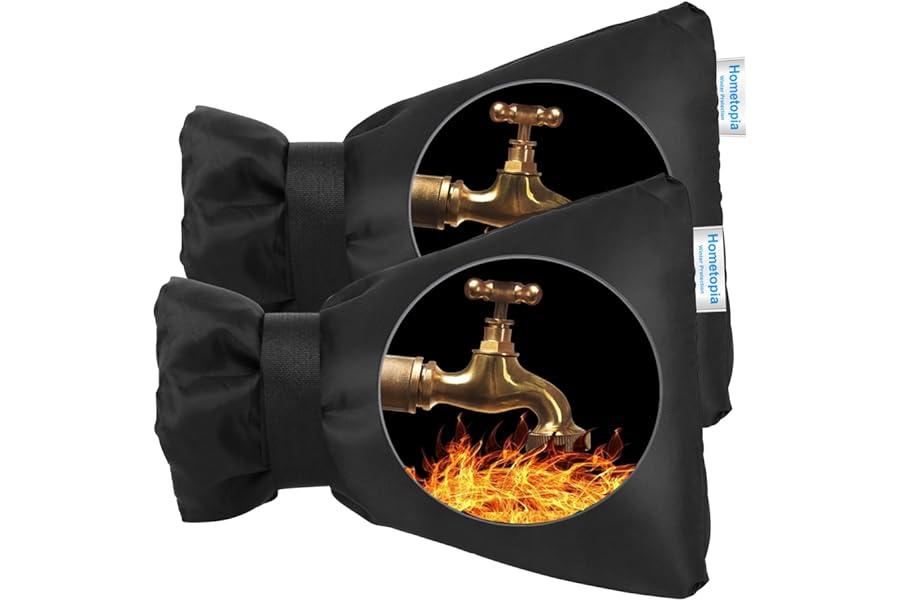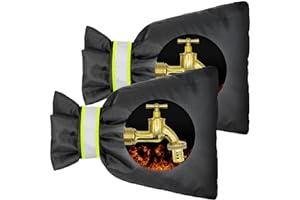Best Selling Outdoor Faucets
Introduction
Outdoor faucets are an essential part of any home. They provide a convenient way to water your lawn, wash your car, or fill up a pool. However, outdoor faucets can also be a source of problems, especially in cold climates. If your outdoor faucet is not properly protected, it can freeze and burst, causing costly damage to your home.
Links to Best Selling Outdoor Faucets
- Outdoor Faucet Cover for Winter - Pro 7.1"W x 10.6"H Outdoor Water Faucet Cover Socks for Winter Freeze Protection Pipe Insulation Reusable Waterproof Insulated Spigot backflow Cover,Black (2) (paid link)
- DELUX Outdoor Faucet Covers 2 Pack for Winter 9.05" H X 6.89" W, Outside Garden Faucet Socks for Freeze Protection, Reusable Waterproof Insulated Spigot Cover(Thicker) (paid link)
Types of Outdoor Faucets
There are two main types of outdoor faucets: freeze-proof faucets and non-freeze-proof faucets. Freeze-proof faucets are designed to withstand freezing temperatures without bursting. They typically have a long spout that extends below the frost line, and they are insulated to prevent the water inside from freezing. Non-freeze-proof faucets are not designed to withstand freezing temperatures. They are typically shorter than freeze-proof faucets, and they are not insulated. If you live in a cold climate, it is important to install a freeze-proof faucet to prevent damage to your home.
Choosing an Outdoor Faucet
When choosing an outdoor faucet, there are a few things you need to consider:
- Climate: If you live in a cold climate, you need to choose a freeze-proof faucet.
- Location: Where do you want to install the faucet? Some faucets are designed for specific locations, such as the side of a house or the front of a garage.
- Usage: How will you be using the faucet? If you need a faucet for watering your lawn, you will need a faucet with a long spout. If you need a faucet for washing your car, you will need a faucet with a shorter spout.
- Style: Outdoor faucets come in a variety of styles, so you can choose a faucet that matches the style of your home.
Installing an Outdoor Faucet
Installing an outdoor faucet is a relatively simple project that can be completed in a few hours. However, it is important to follow the manufacturer's instructions carefully to ensure that the faucet is installed properly. Here are the general steps involved in installing an outdoor faucet:
- Choose a location for the faucet.
- Turn off the water supply to the area where you will be installing the faucet.
- Drill a hole in the wall or siding for the faucet.
- Install the faucet according to the manufacturer's instructions.
- Turn on the water supply and check for leaks.
Maintaining an Outdoor Faucet
To keep your outdoor faucet in good working condition, it is important to maintain it regularly. Here are a few tips for maintaining your outdoor faucet:
- Insulate the faucet: If you live in a cold climate, you should insulate your outdoor faucet to prevent it from freezing.
- Drain the faucet: When the weather gets cold, you should drain the water from your outdoor faucet to prevent it from freezing.
- Lubricate the faucet: You should lubricate the faucet regularly to keep it moving smoothly.
- Inspect the faucet: You should inspect the faucet regularly for leaks or damage.
Conclusion
Outdoor faucets are an essential part of any home. By choosing the right faucet, installing it properly, and maintaining it regularly, you can ensure that your outdoor faucet will provide you with years of trouble-free service.

